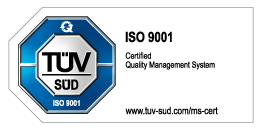Diesel Locomotive.
Prototype: Belgian State Railways (SNCB/NMBS) class 59. Later version of the original class 201. B-B wheel arrangement.
Most Important Facts
| Article No. | 22337 |
|---|---|
| Gauge / Design type | Trix H0 / |
| Era | IV |
| Kind | Diesel Locomotives |
Check with your local dealer Find Dealer
-
Product description
Model: Era IV. The locomotive comes with a powerful 5-pole motor and an NEM 8-pin digital connector. 2 axles powered. 4 traction tires. The headlights / marker lights are maintenance-free LED's that change over with the direction of travel. The overhang on the locomotive is different in length as in the prototype. The locomotive has separately applied handrails and air intake grills. It also has NEM coupler pockets. Length over the buffers 186 mm / 7-5/16".
This model can be found in a three-rail version in the Märklin assortment under item no. 37271.
Spare parts for our articles can be found here in our spare parts search.
-
Publications
- Main Catalog 2006 - New Items 2006 - Main Catalog 2007/2008
-
Prototype information
Long-Lived General-Purpose Diesel - At the beginning of the Fifties, the SNCB was looking for alternatives to steam motive power. The new locomotives had to be suitable for branch lines that were not economical to electrify as well as for main lines during the transition period until the latter had usable catenary. At that time the only reliable information about the broad use of powerful diesel locomotives was available in the United States. The introduction of diesel motive power on the SNCB therefore ended up by necessity in a cooperative venture between the American locomotive builders and the Belgian railroader equipment builders. At the end of 1953 SNCB awarded a contract for 55 four-axle class 201 locomotives to be built in the John Cockerill plant in Seraing. They were designed for the lighter traffic routes on the northern plains of Sambre and Maas and were equipped with a Baldwin motor. The first regular production locomotive was delivered in December of 1954. The last of these long-lived locomotives was still pulling work trains in June of 2002 for the construction of the high-speed routes in France and Belgium. These units were given a green paint scheme with yellow decorative striping as well as additional steps under the headlights in mid-Sixties.




